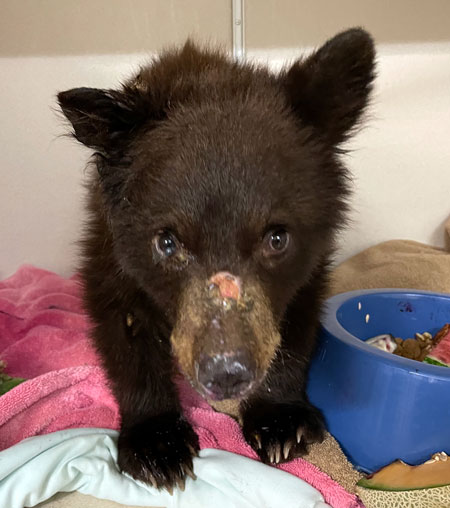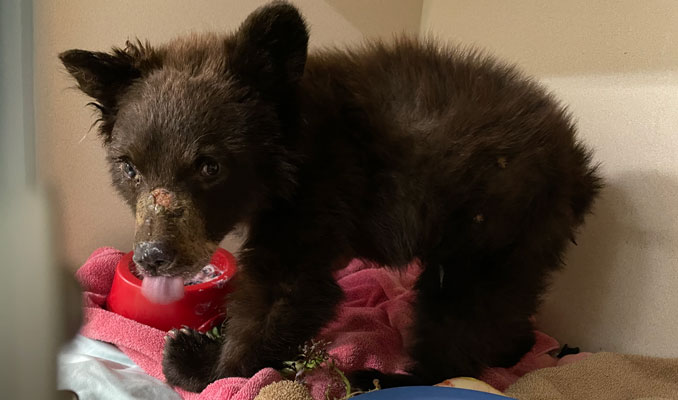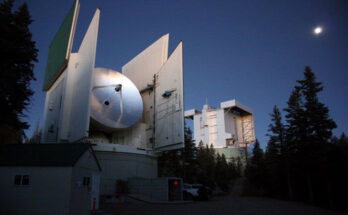Contributed Photo/Courtesy Linda Searles, Director Southwest Wildlife Conservation Center: The rescued cub is being rehabilitated at the Southwest Wildlife Conservation Center in Scottsdale.
By Jon Johnson
GRAHAM COUNTY – The Arizona Game & Fish Department rescued a lost female bear cub on Sunday morning and transported it to where it could receive the care it needs.
Officers were called at about 9 a.m. regarding a bear cub in a resident’s garden in the 10000 block of S. Sky Blue Road, south of Safford in the Artesia area. The cub had reportedly been spotted eating pomegranates.
The bear cub, which was located on a pole, was under a year old and weighed less than 20 pounds, according to Arizona Game & Fish Department Public Information Officer Mark Hart. The bear appeared to have a non-life-threatening injury to its nose. While the department has a zero-tolerance policy for nuisance males, females and young bears will get one or two chances for relocation.
With the assistance of a Graham County Sheriff’s Office deputy, an Arizona Game & Fish Officer used a catchpole to place the cub into an animal carrier.
“Given how young it was and given that mom was nowhere to be found, we transported it to Southwest Wildlife (Conservation Center) in Scottsdale, which is a certified rehabber,” Hart said.
“It was a good thing we got it out of harm’s way. It probably wouldn’t have survived on its own. It’s too small.”

Southwest Wildlife Conservation Center Director Linda Searles told the Gila Herald that the cub was responding well to treatment. She said it was surprising to see such a young cub this late in the season. The cub will rehabilitate with another cub around the same size that was brought in from the Tucson area and when the cub is about 1 year old it will likely be released into the wilderness, possibly with an ear tag to monitor its position. The center has been in operation for 27 years and currently has five cubs at its location.
“It’s really shocking to see one that size this time of year,” Searles said.
The cub has been in the facility’s ICU on oxygen and was receiving antibiotics while being treated for pneumonia.
On Thursday, Searles reported the cub was eating well and starting to act more like a bear. Searles said that was a good sign and is hopeful for a full recovery.
The black bear is the only bear species still found in Arizona and generally hibernates from November through March. They are omnivores with a range of between 7 – 50 square miles and mostly live in woodland habitats in Arizona. While they are called black bears, they range in color from black to brown and even blonde in some cases, with males growing up to about 350 pounds and females to about 250 pounds.








